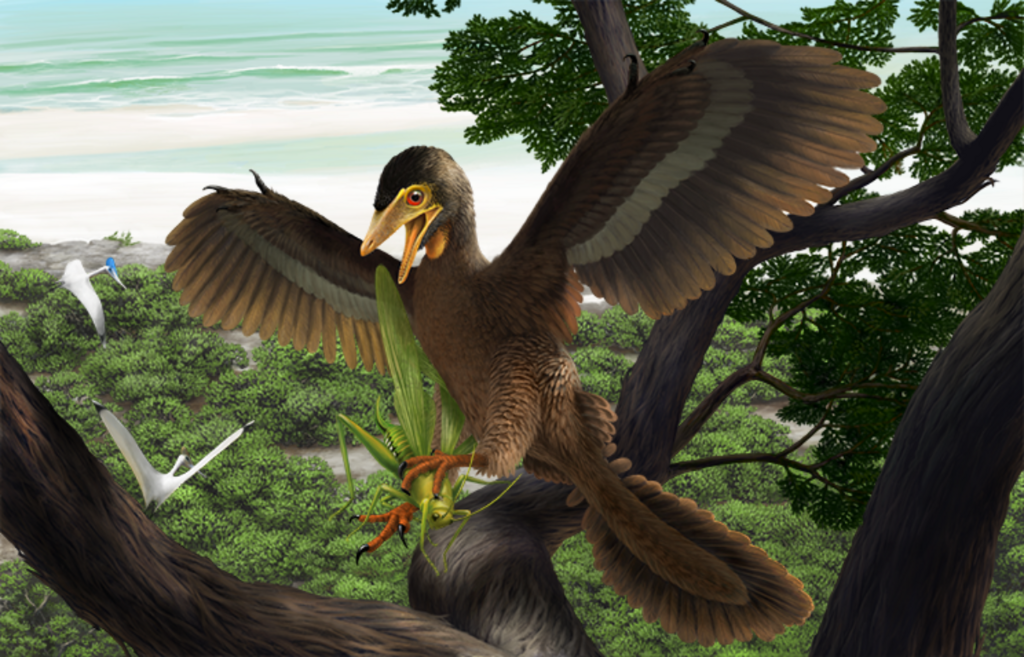When Hermann von Meyer described a fossilised feather from the Solnhofen Platy Limestones in 1861, he immediately knew that it was a sensational scientific discovery. He named the fossil Archaeopteryx, which means “primeval feather” or “primeval wing”.
Only two years later, it became clear which strange animal the feather belonged to: a mixed creature between reptile and bird. Such transitional forms, referred to as “missing links”, had been predicted by Charles Darwin a few years earlier. Archaeopteryx is an impressive evidence confirming the model of the evolution of species until today. Our fundamental knowledge of the evolution of organisms, from viruses to humans, is based on these fossils.

